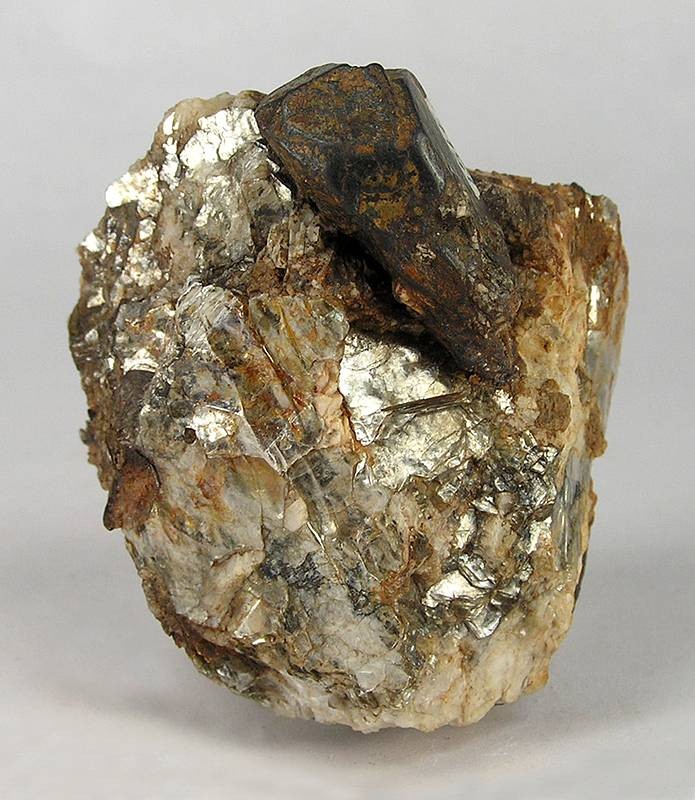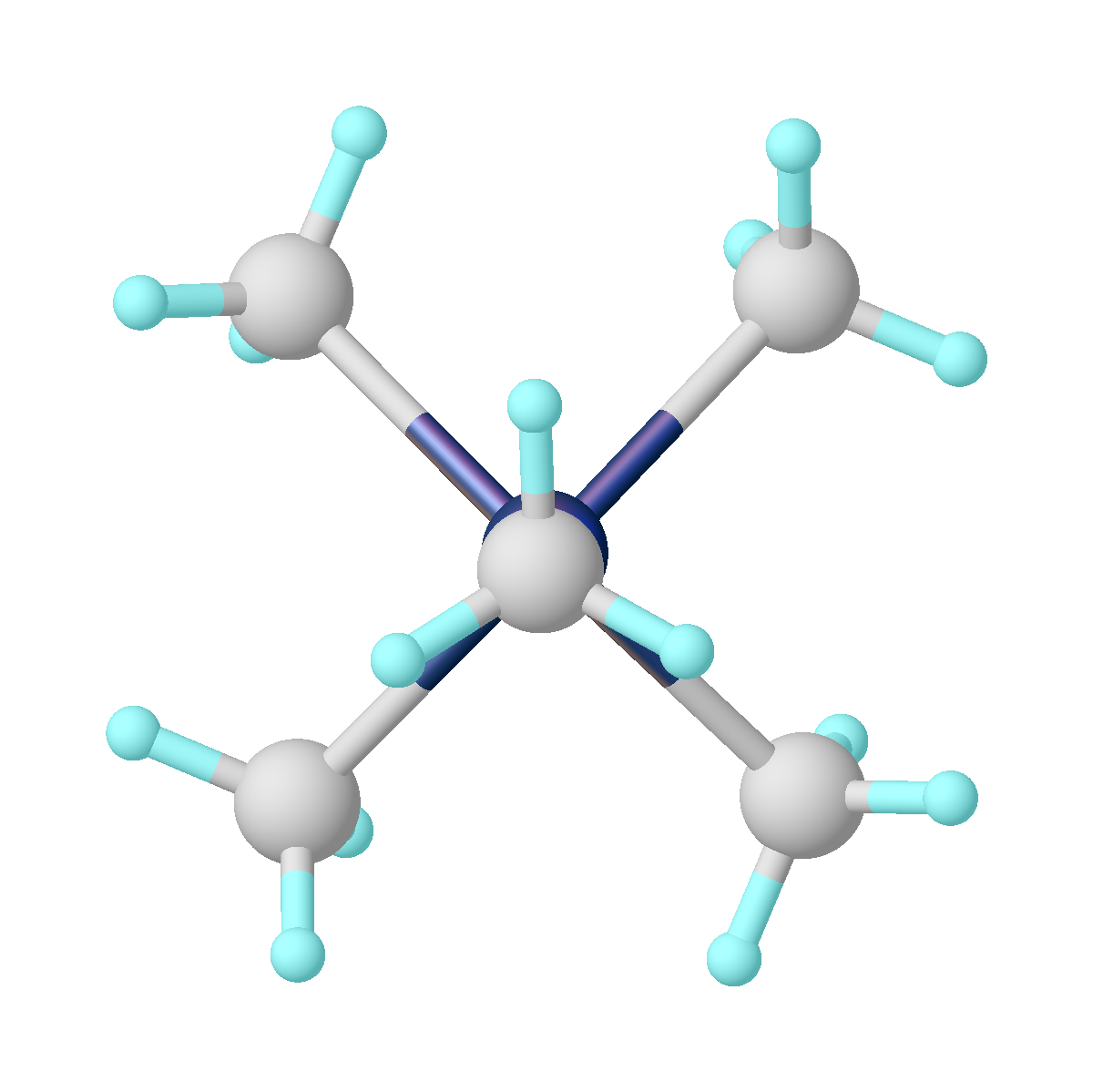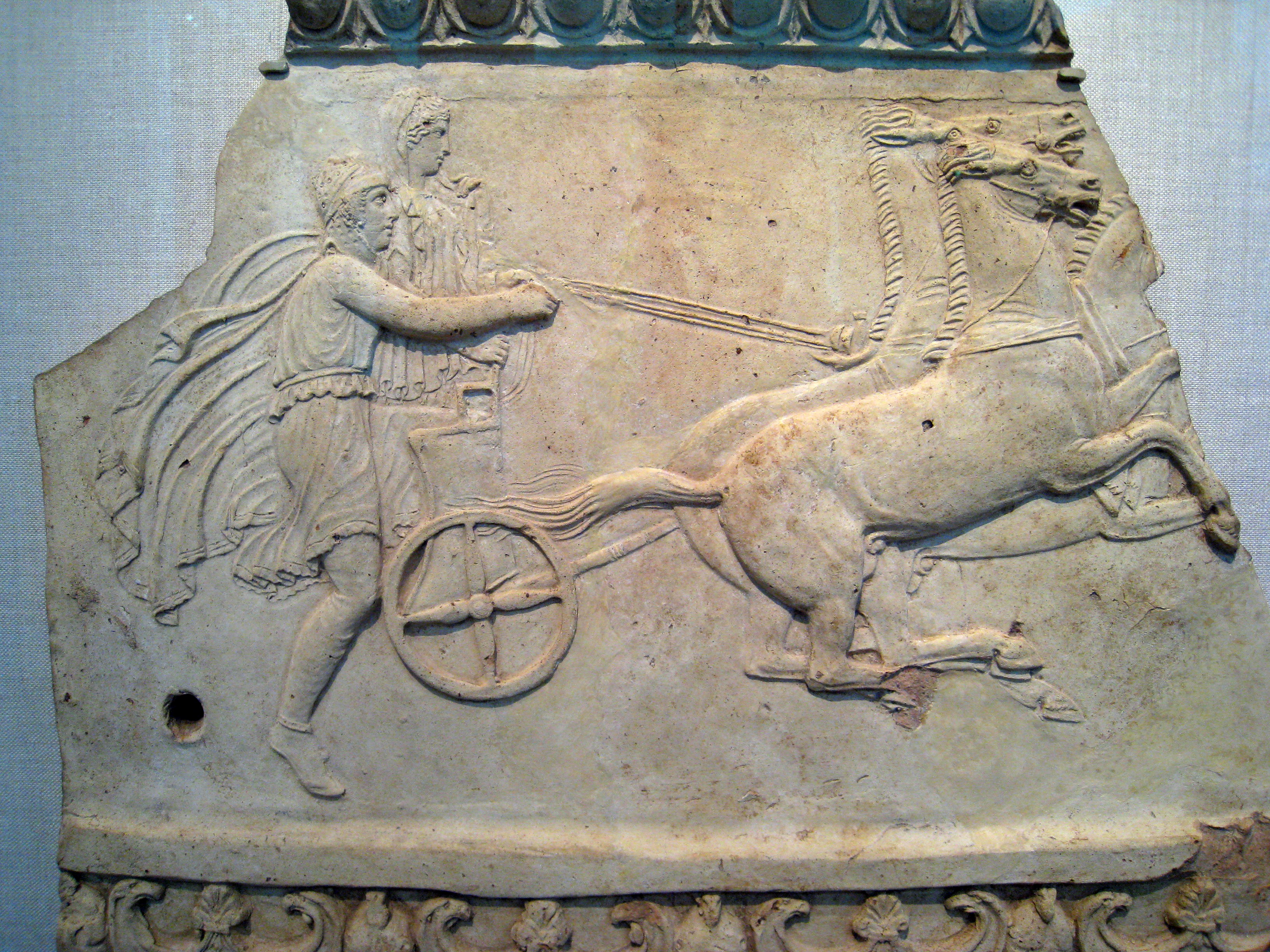|
Pelopium
Pelopium was the proposed name for a new element found by the chemist Heinrich Rose in 1845. The name derived from the Greek king and later god Pelops, son of Tantalus. During the analysis of the mineral tantalite he concluded that it does contain an element similar to niobium and tantalum. The similar reactivity of niobium and tantalum complicated preparation of pure samples and therefore several new elements were proposed, which were later found to be mixtures of niobium and tantalum. The differences between tantalum and niobium and the fact that no other similar element was present were unequivocally demonstrated in 1864 by Christian Wilhelm Blomstrand, and Henri Etienne Sainte-Claire Deville, as well as Louis J. Troost, who determined the formulas of some of the compounds in 1865 and finally by the Swiss chemist Jean Charles Galissard de Marignac. This confusion arose from the minimal observed differences between tantalum and niobium. Both tantalum and niobium react with chlor ... [...More Info...] [...Related Items...] OR: [Wikipedia] [Google] [Baidu] |
Heinrich Rose
Heinrich Rose (6 August 1795 – 27 January 1864) was a German mineralogy, mineralogist and analytical chemist. He was the brother of the mineralogist Gustav Rose and a son of Valentin Rose (pharmacologist), Valentin Rose. Rose's early works on phosphorescence were noted in the Quarterly Journal of Science in 1821, and on the strength of these works, he was elected privatdozent at the University of Berlin from 1822, then Professor from 1832. In 1846 Rose rediscovered the chemical element niobium, proving conclusively that it was different from tantalum. This confirmed that Charles Hatchett had discovered niobium in 1801 in columbite ore. Hatchett had named the new element "columbium", from the ore in which niobium and tantalum coexist. The element was eventually assigned the name niobium by the IUPAC in 1950 after Niobe, the daughter of Tantalus in Greek mythology. In 1845 Rose published the discovery of a new element pelopium, which he had found in the mineral tantalite. A ... [...More Info...] [...Related Items...] OR: [Wikipedia] [Google] [Baidu] |
Dianium
Dianium was the proposed name for a new element found by the mineralogist and poet Wolfgang Franz von Kobell in 1860. The name derived from the Roman goddess Diana. During the analysis of the mineral tantalite and niobite he concluded that it does contain an element similar to niobium and tantalum. The symbol was Di. Following the rediscovery of niobium in 1846 by the German chemist Heinrich Rose, Friedrich Wöhler, Heinrich Rose, R. Hermann and Kobell analysed the minerals tantalite and columbite to better understand the chemistry of niobium and tantalum. The similar reactivity of niobium and tantalum hindered preparation of pure samples and therefore several new elements were proposed, which were later found to be mixtures of niobium and tantalum. Rose discovered pelopium in 1846, while Hermann announced the discovery of ilmenium in 1847. In 1860 Kobell published the results on the tantalite from a quarry near Kimito a village in Finland and columbite from Bodenmais a village i ... [...More Info...] [...Related Items...] OR: [Wikipedia] [Google] [Baidu] |
Tantalum
Tantalum is a chemical element with the symbol Ta and atomic number 73. Previously known as ''tantalium'', it is named after Tantalus, a villain in Greek mythology. Tantalum is a very hard, ductile, lustrous, blue-gray transition metal that is highly corrosion-resistant. It is part of the refractory metals group, which are widely used as components of strong high-melting-point alloys. It is a group 5 element, along with vanadium and niobium, and it always occurs in geologic sources together with the chemically similar niobium, mainly in the mineral groups tantalite, columbite and coltan. The chemical inertness and very high melting point of tantalum make it valuable for laboratory and industrial equipment such as reaction vessels and vacuum furnaces. It is used in tantalum capacitors for electronic equipment such as computers. Tantalum is considered a technology-critical element by the European Commission. History Tantalum was discovered in Sweden in 1802 by And ... [...More Info...] [...Related Items...] OR: [Wikipedia] [Google] [Baidu] |
Niobium
Niobium is a chemical element with chemical symbol Nb (formerly columbium, Cb) and atomic number 41. It is a light grey, crystalline, and ductile transition metal. Pure niobium has a Mohs hardness rating similar to pure titanium, and it has similar ductility to iron. Niobium oxidizes in Earth's atmosphere very slowly, hence its application in jewelry as a hypoallergenic alternative to nickel. Niobium is often found in the minerals pyrochlore and columbite, hence the former name "columbium". Its name comes from Greek mythology: Niobe, daughter of Tantalus, the namesake of tantalum. The name reflects the great similarity between the two elements in their physical and chemical properties, which makes them difficult to distinguish. English chemist Charles Hatchett reported a new element similar to tantalum in 1801 and named it columbium. In 1809, English chemist William Hyde Wollaston wrongly concluded that tantalum and columbium were identical. German chemist Heinrich ... [...More Info...] [...Related Items...] OR: [Wikipedia] [Google] [Baidu] |
Misidentified Chemical Elements
Chemical elements that have been mistakenly "discovered". Further investigation showed that their discovery was either mistaken, that they have been mistaken from an already-known element, or mixture of two elements, or that they indicated a failing in theory where a new element had been assumed rather than some previously unknown behaviour. References {{DEFAULTSORT:Misidentified chemical elements Misidentified chemical elements, Chemistry-related lists ... [...More Info...] [...Related Items...] OR: [Wikipedia] [Google] [Baidu] |
Tantalite
The mineral group tantalite manganese.html" ;"title="iron.html" ;"title="iron">Fe, manganese">Mn)Tantalum">Ta2oxygen">O6is the primary source of the chemical element tantalum, a corrosion (heat and acid) resistant metal. It is chemically similar to ''columbite'', and the two are often grouped together as a semi-singular mineral called coltan or "columbite-tantalite" in many mineral guides. However, tantalite has a much greater specific gravity than columbite (8.0+ compared to columbite's 5.2). Iron-rich tantalite is the mineral tantalite-(Fe) or ''ferrotantalite'' and manganese-rich is tantalite-(Mn) or ''manganotantalite''. Tantalite is also very close to '' tapiolite''. Those minerals have the same chemical composition, but different crystal symmetry: orthorhombic for tantalite and tetragonal for tapiolite. Tantalite is black to brown in both color and streak. Manganese-rich tantalites can be brown and translucent. Occurrence Tantalite occurs in granitic pegmatites that are ... [...More Info...] [...Related Items...] OR: [Wikipedia] [Google] [Baidu] |
Christian Wilhelm Blomstrand
Christian Wilhelm Blomstrand (20 October 1826 – 5 November 1897) was a Swedish mineralogist and chemist. He was a professor at the University of Lund from 1862-1895, where he isolated the element niobium in 1864. He developed an early version of the periodic table and made advances in understanding the chemistry of coordination compounds. Blomstrand published textbooks in chemistry and was well-known internationally for his scientific contributions. Education and career Blomstrand was born in Växjö, Sweden to his father John Blomstrand, who was a teacher, and his wife Severina Rodhe. Blomstrand studied mineralogy at the University of Lund, where he earned a philosophy degree in 1850. He then became interested in chemistry and was the first recipient of the Berzelius scholarship. In 1854, he completed his habilitation for research on bromine and iodine compounds of tin. With the exception of lecturing at the Elementary Technical School of Malmö in 1855 and working a ... [...More Info...] [...Related Items...] OR: [Wikipedia] [Google] [Baidu] |
Henri Etienne Sainte-Claire Deville
Henri is an Estonian, Finnish, French, German and Luxembourgish form of the masculine given name Henry. People with this given name ; French noblemen :'' See the 'List of rulers named Henry' for Kings of France named Henri.'' * Henri I de Montmorency (1534–1614), Marshal and Constable of France * Henri I, Duke of Nemours (1572–1632), the son of Jacques of Savoy and Anna d'Este * Henri II, Duke of Nemours (1625–1659), the seventh Duc de Nemours * Henri, Count of Harcourt (1601–1666), French nobleman * Henri, Dauphin of Viennois (1296–1349), bishop of Metz * Henri de Gondi (other) * Henri de La Tour d'Auvergne, Duke of Bouillon (1555–1623), member of the powerful House of La Tour d'Auvergne * Henri Emmanuel Boileau, baron de Castelnau (1857–1923), French mountain climber * Henri, Grand Duke of Luxembourg (born 1955), the head of state of Luxembourg * Henri de Massue, Earl of Galway, French Huguenot soldier and diplomat, one of the principal commanders of Bat ... [...More Info...] [...Related Items...] OR: [Wikipedia] [Google] [Baidu] |
Louis J , names sometimes translated to English as "Louis"
{{disambi ...
Louis may refer to: * Louis (coin) * Louis (given name), origin and several individuals with this name * Louis (surname) * Louis (singer), Serbian singer * HMS ''Louis'', two ships of the Royal Navy See also Derived or associated terms * Lewis (other) * Louie (other) * Luis (other) * Louise (other) * Louisville (other) * Louis Cruise Lines * Louis dressing, for salad * Louis Quinze, design style Associated names * * Chlodwig, the origin of the name Ludwig, which is translated to English as "Louis" * Ladislav and László - names sometimes erroneously associated with "Louis" * Ludovic, Ludwig, Ludwick, Ludwik Ludwik () is a Polish given name. Notable people with the name include: * Ludwik Czyżewski, Polish WWII general * Ludwik Fleck (1896–1961), Polish medical doctor and biologist * Ludwik Gintel (1899–1973), Polish-Israeli Olympic soccer player ... [...More Info...] [...Related Items...] OR: [Wikipedia] [Google] [Baidu] |
Pelops
In Greek mythology, Pelops (; ) was king of Pisa in the Peloponnesus region (, lit. "Pelops' Island"). He was the son of Tantalus and the father of Atreus. He was venerated at Olympia, where his cult developed into the founding myth of the Olympic Games, the most important expression of unity, not only for the people of Peloponnesus, but for all Hellenes. At the sanctuary at Olympia, chthonic night-time libations were offered each time to "dark-faced" Pelops in his sacrificial pit ('' bothros'') before they were offered in the following daylight to the sky-god Zeus (Burkert 1983:96). Genealogy Pelops was a son of Tantalus and either Dione, Euryanassa, Eurythemista,Scholia ad Euripides, ''Orestes'11/ref> or Clytia. In some accounts, he was called a bastard son of Tantalus while others named his parents as Atlas and the nymph Linos. Others would make Pelops the son of Hermes and Calyce while another says that he was an Achaean from Olenus. Of Phrygian or Lydian bir ... [...More Info...] [...Related Items...] OR: [Wikipedia] [Google] [Baidu] |
Annales De Chimie Et De Physique
__NOTOC__ ''Annales de chimie et de physique'' (French for ''Annals of Chemistry and Physics'') is a scientific journal founded in Paris, France, in 1789 under the title ''Annales de chimie''. One of the early editors was the French chemist Antoine Lavoisier. Lavoisier, an aristocrat, was guillotined in May 1794, ostensibly for tax fraud: and the journal was not published from 1794 to 1796 while the Reign of Terror was at its height under the French Directory. In 1815, it became the ''Annales de chimie et de physique'', and was published under that name for the next 100 years. In 1914, it split into two successor journals. The first one, ''Annales de physique'', was latterly published by EDP Sciences under the same name up to 2009, when it became integrated in the '' European Physical Journal'' series as the '' European Physical Journal H – Historical Perspectives on Contemporary Physics''. The second successor, ''Annales de chimie'', later became '' Annales de chimie: Scienc ... [...More Info...] [...Related Items...] OR: [Wikipedia] [Google] [Baidu] |





.jpg)